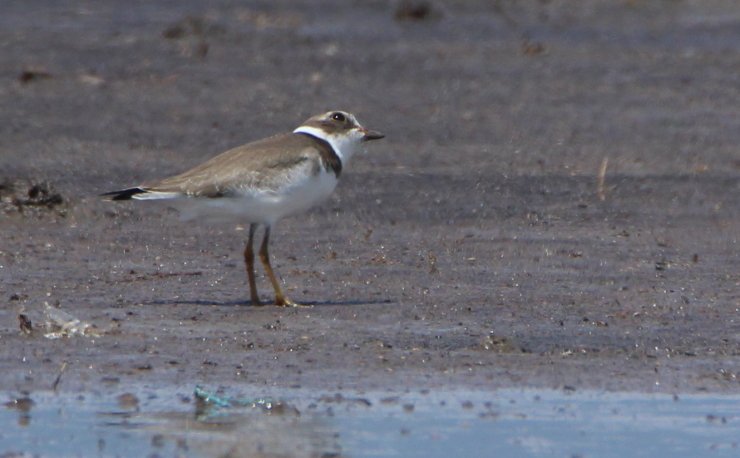
In late July, I travelled a half hour north of Morelia to Lake Cuitzeo (kweet-SAY-oh) to see if our two inevitable first migratory species from up north, Baird’s Sandpiper and Wilson’s Phalarope, had begun arriving. At that point, neither species was yet present, and there wasn’t much of a lake, either. A month later, I found large numbers of Phalaropes and a few Baird’s Sandpipers, but no other migratory species had yet arrived. Lake levels were a bit higher after a second month of summer rains.
That is probably where things would have stayed for me for several additional weeks, had it not been for the visit of one of my Mexican birding friends. Jonathan Vargas is a young biologist, whose current work centers on monitoring the Snowy Plover populations in northern Baja California. His wife, Fany, is also a biologist, and is from Morelia. For a few years now, every time they visit their family here, he or they go with me to bird my favorite sites. And yet, oddly, they had never visited Lake Cuitzeo, which has a good resident population of Snow Plovers.
That changed last week, when they happened to be here on the World Shorebirds Day weekend. Being a pastor, birding on Sunday is not practical for me, but I gave Jonathan and Fany detailed instructions for birding the lake. They had such a good time that on Monday Jonathan took me back to see what he had found.
One important discovery was that the migratory season is now in full swing. Just two weeks earlier, the only ducks I had seen were a handful of resident Mexican Ducks and Fulvous Whistling-Ducks. But now, as if by magic, there were thousands of Northern Shovelers, as well as a good number of Blue-winged and Green-winged Teals, and some early Northern Pintails. I’m not sure what they think of 2020’s low water levels, but they looked happy!
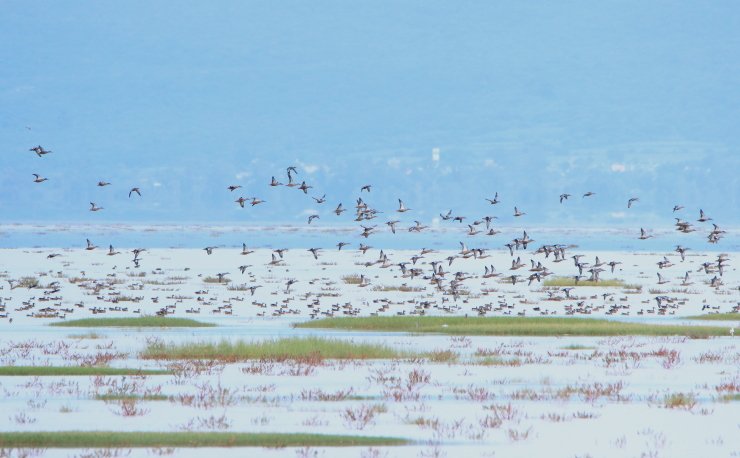 That’s a lot of Northern Shovelers.
That’s a lot of Northern Shovelers.
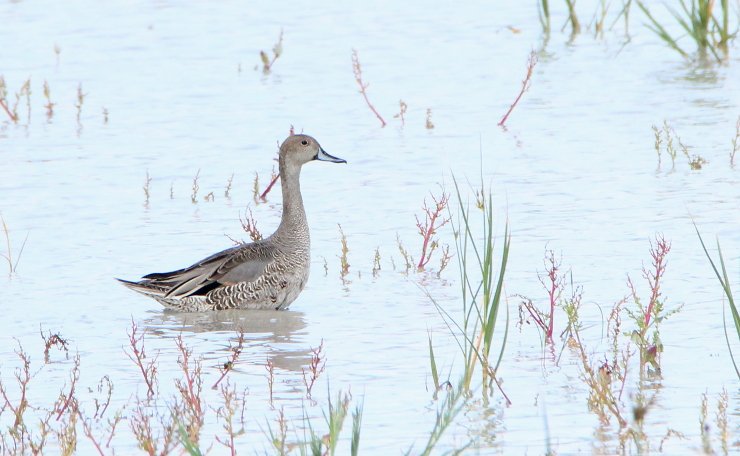 I came south early, just to pose for you. (Northern Pintail, female)
I came south early, just to pose for you. (Northern Pintail, female)
And then there were the arriving shorebirds. The Wilson’s Phalaropes seemed a bit less numerous than on my previous visit two weeks before. But the hundred or so Baird’s Sandpipers I had seen then now numbered in the thousands. And they were not alone! The first Western and Least Sandpipers had arrived for the winter. Lesser and Greater Yellowlegs seemed more numerous than I had evers seen them, perhaps because I had a professional doing most of the counting. And there were also some of my favorite passers-through: A good number of Long-billed Curlews, lots of Stilt Sandpipers mixed in with our winter-resident Long-billed Dowitchers, and even a pair of Pectoral Sandpipers. That’s a lot of arrivals for a mere two weeks! (Thank God that no travel bans are in place for birds.)
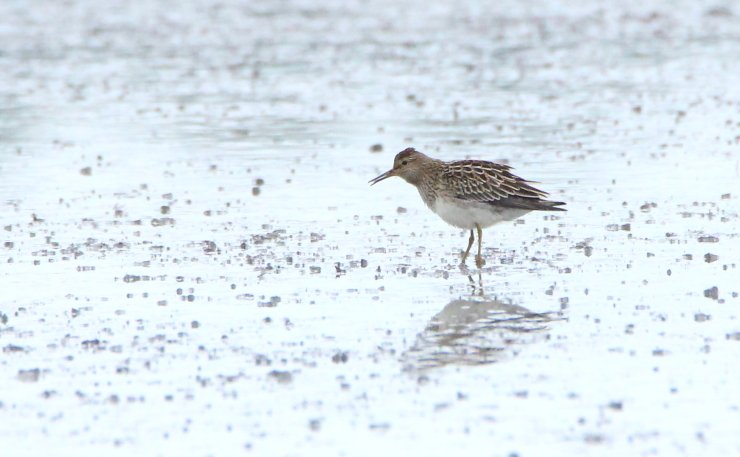 A Pectoral Sandpiper at dawn is a nice way to start your day.
A Pectoral Sandpiper at dawn is a nice way to start your day.
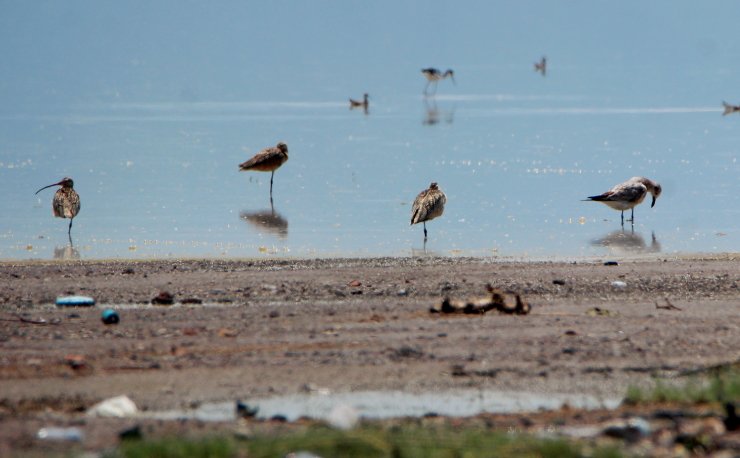 I love Long-billed Curlews. Laughing Gulls? They’re OK, too.
I love Long-billed Curlews. Laughing Gulls? They’re OK, too.
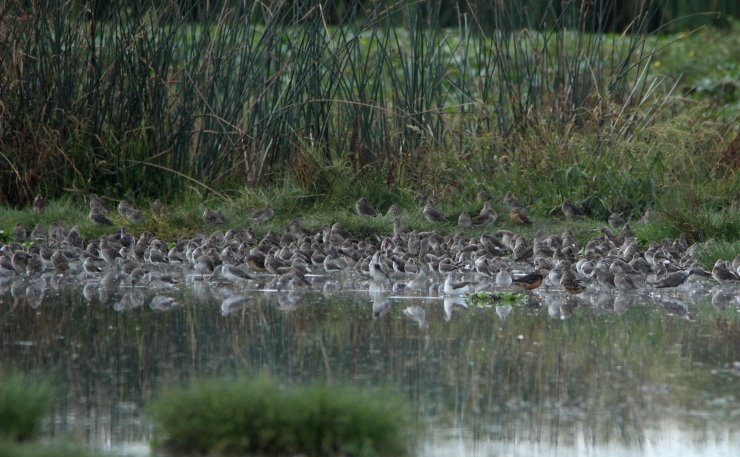 No lack of Stilt Sandpipers and Long-billed Dowitchers here!
No lack of Stilt Sandpipers and Long-billed Dowitchers here!
Speaking of trained professionals, I always learn new things when I get to bird with biologist friends. Birding on Lake Cuitzeo is a real challenge right now, because what little water has gathered in the center of the lake is surrounded by extensive mud flats. To which Jonathan said, “Do you have rubber boots?” (“Yes, I do”, I replied sheepishly.) “I just go barefoot,” he commented, “as long as there isn’t any broken glass around.”
Lesson #1 learned: It turns out that it is very easy to walk on some lakebeds, with the right footwear (or no footwear). Lesson #2 learned: Shorebirds are remarkably trusting when you get down on the lakebed with them!
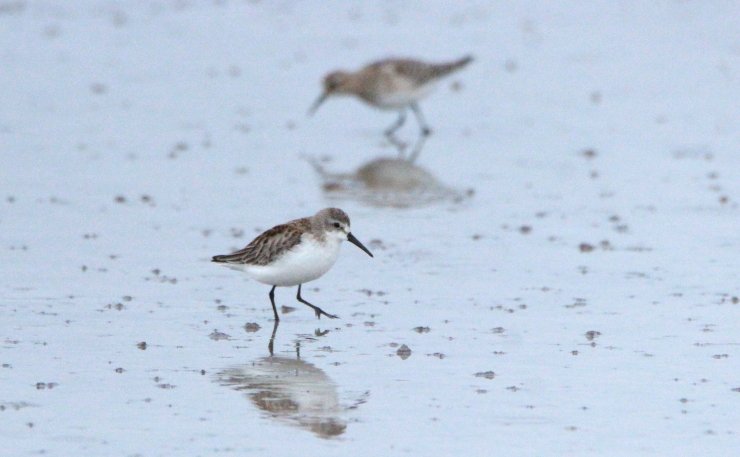 Trusting.
Trusting.
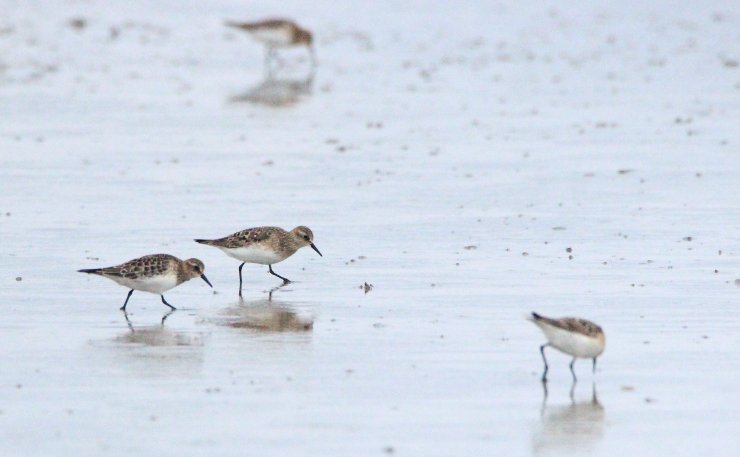 So trusting.
So trusting.
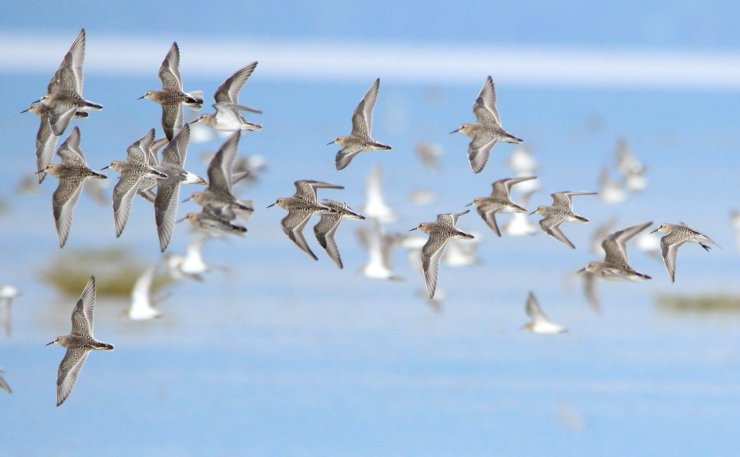 Even trusting in flight! I was amazed how close to us these Baird’s Sandpipers flew while we were on the lakebed.
Even trusting in flight! I was amazed how close to us these Baird’s Sandpipers flew while we were on the lakebed.
Lesson #3: Go a bit further west, and the mudflats along the edges of central Lake Cuitzeo give way to a sand/gravel mixture. (Jonathan, of course, found this area.) Lesson #4: Plovers, especially Snowy Plovers, love a good sand/gravel mixture.
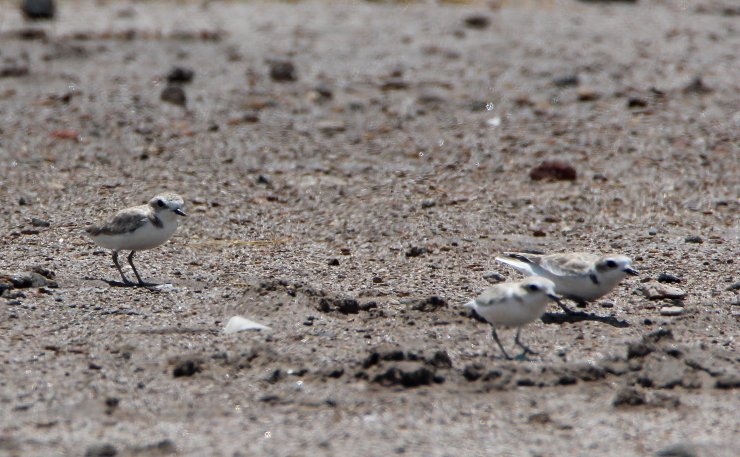 Yes, we Snowy Plovers love us some light-colored gravel. That’s a home-grown juvenile up front, which is always a good sign.
Yes, we Snowy Plovers love us some light-colored gravel. That’s a home-grown juvenile up front, which is always a good sign.
Possible Lesson #5, worth some serious scientific study: In September, some of this sand/gravel mixture is absolutely swarming with what are apparently called Shore Flies (Ephydridae). You could see these creatures move in literal waves ahead of feeding birds. It was, again, Jonathan who wondered out loud if this super-abundance of food might be the reason so many shorebirds stop over at Lake Cuitzeo on their way further south. Perhaps the lake’s insects function like the Atlantic Horseshoe Crab eggs that shorebirds gorge on along Chesapeake Bay during their northward spring migration?
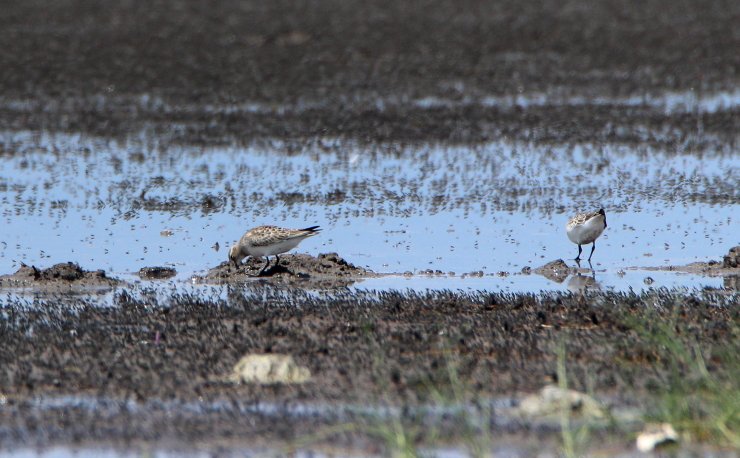 Every one of the little black apostrophes in this photo… was alive! And, if you are a bird, tasty.
Every one of the little black apostrophes in this photo… was alive! And, if you are a bird, tasty.
I was worried about how our low lake levels would affect the fall migratory season, but I will worry no more. Now I just hope we can get enough rains from what is left of our monsoon season to see the lake through the winter.













What fun to read your list of learnings!